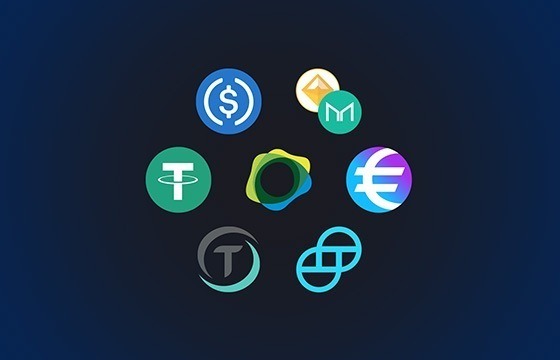Stablecoins: everything you need to know
The term stable coin has probably been around for all of you, and they have grown in popularity in recent times. Stablecoins' original and primary function was to protect against high price volatility in cryptocurrencies, and they are still used for this purpose today.
Stablecoins also make it easier for traders to work in the market and greatly reduce the time it takes to enter and exit individual trades. From mid-February 2020 through August of this year, they grew from $5.7 billion to an incredible $119 billion.
Introduction to the world of stabelcoins
Stablecoins were originally created to give traders a way to protect themselves from the high volatility of cryptocurrency prices, as mentioned above. When trading, they could simply "lock in" the current value by selling stabelcoin, and subsequently enter a new market without having to convert their funds back into fiat. In addition, some exchanges do not offer the ability to enter through fiat bridges, and in this situation, stabelcoins come to the rescue once again.
Their popularity is also growing with decentralized exchanges, which by their very nature no longer offer solutions in fiat currencies. Brokerage costs are an important success factor, since stabelcoins are a much cheaper option in this respect than transfers via the dollar or euro, which entail high fees and time delays.
Of course, the growing popularity of this type of digital asset is also evidenced by statistics. The total market has grown from $5.7 billion to $119 billion over the past year. Among the main catalysts for this growth can be seen, for example, the DeFi industry, Yield Farming, as well as the generally increased demand for cryptocurrencies around the world.
What determines the value of stabelcoin
Basically, Stablecoins have several properties that determine their value on the market. The first thing the price is tied to is traditional currencies, such as the dollar or the euro. Stablecoin can also be tied to the value of other assets, such as gold.
The value of stabelcoin is secured by what is known as collateral, which means locking up assets to provide the required value in the market. Options for collateral besides fiat include commodity currencies, other cryptocurrencies, or a combination thereof. There is also a difference between on-net and off-net collateral.
The final factor is the size of the collateral. It can be full, which means that a known stabelcoin has reserves of at least the market capitalization of the coin. In the case of partial collateral, the developer does not fully cover the entire amount of market capitalization, and if all holders want to exchange their stabelcoins for the asset to which they are pegged, it will not be possible. This system is similar to the functioning of banks and negatively affects stability.
Types of Stablecoins
- Tokenized assets
This group includes almost all of the major stablenecoins, such as USDT, USDC and BUSD. They are relatively easy to use and are the blockchain equivalent of existing monetary units. The customer of the company behind the stabelcoin will transfer their funds, and the company will create the same number of tokenized units that it will transfer to the customer. These can then be used on the blockchain like any other cryptocurrency. - Secured Stablecoins
This type of cryptocurrency is, by definition, covered by collateral, which can change over time. Off-network collateralized Stablecoins are very similar to tokenized assets, and the process of issuing/burning them also takes place. In collateralized stabelcoins, the cryptocurrency is sent to a smart contract, which then acts as collateral. The user can then issue the stabelcoins against that collateral and use them as they see fit. This scheme is similar to a loan, and in order for the user to access their collateral, they must pay a certain amount. DAI is one of the most famous stablcoins of this type. - Algorithmic Stablecoins
The third and final type of stabelcoin is the algorithmic variant. For these tokens, there is no collateral to fix the value, and their price is maintained by another stabilization system (algorithm). An example of a similar stabelcoin is FRAX.
That's all, and we remind you that you can exchange cryptocurrency with us.























 Tonkeeper
Tonkeeper Русский
Русский English
English